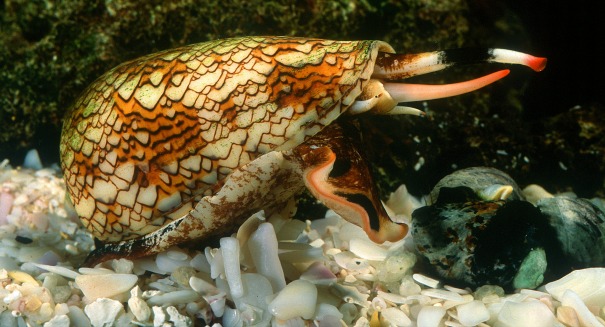
A surprising new study has found that the deadly cone snail found in Australia could have some important medical uses.
They’ve been called one of the most venomous creatures on the planet, and if you step on one you are in for a bad time. However, while the infamous cone snail can kill a human in a matter of minutes, scientists have found that it could lead to the development of new drugs that could treat a variety of ailments, from pain to addition to cancer.
University of Queensland pain treatment researchers announced that they had discovered thousands of new peptide toxins hidden in the venom in just one type of of the cone snail, according to a university statement.
Professor Paul Alewood, one of the researchers, said they use dbiochemical and bioinformatics tools to analyze the structure of the toxins.
Cone snails are known to produce toxin that has medical benefits, and these findings allow scientists to understand more about this deadly creature than they ever have before, especially the complex venom it holds within.
By using this method of measuring and analyzing the structure and composition of the proteins within the venom, they were able to discover the highest number of peptides, or mini-proteins, that a single cone snail can produce.
A total of 25 frameworks have been discovered in the last quarter-century, and these have led to drugs for several diseases. These new frameworks that have been discovered could lead to medications that could treat pain, cancer, and other diseases, Alewood said according to the statement.
The cone snail belongs to the Conus genus, a genus of small to large predatory sea snails. Therefore, cone snail encompasses a variety of species. They have colorful patternings on their shells, and typically use geometric cones. They are very venomous and capable of stinging humans using a hypodermic-like modified radula tooth attached to a venom gland, which is intended to paralyze prey before it consumes it.